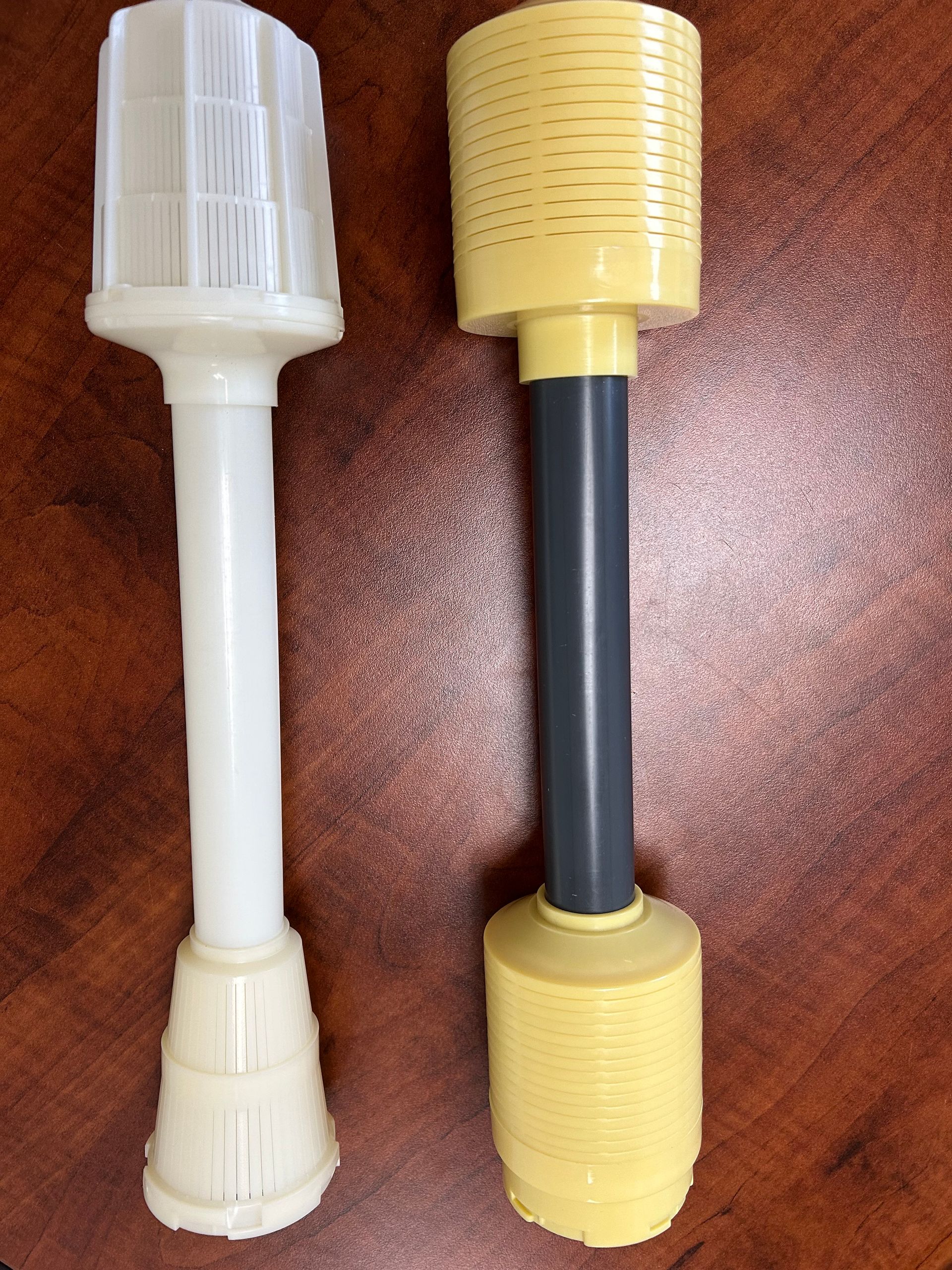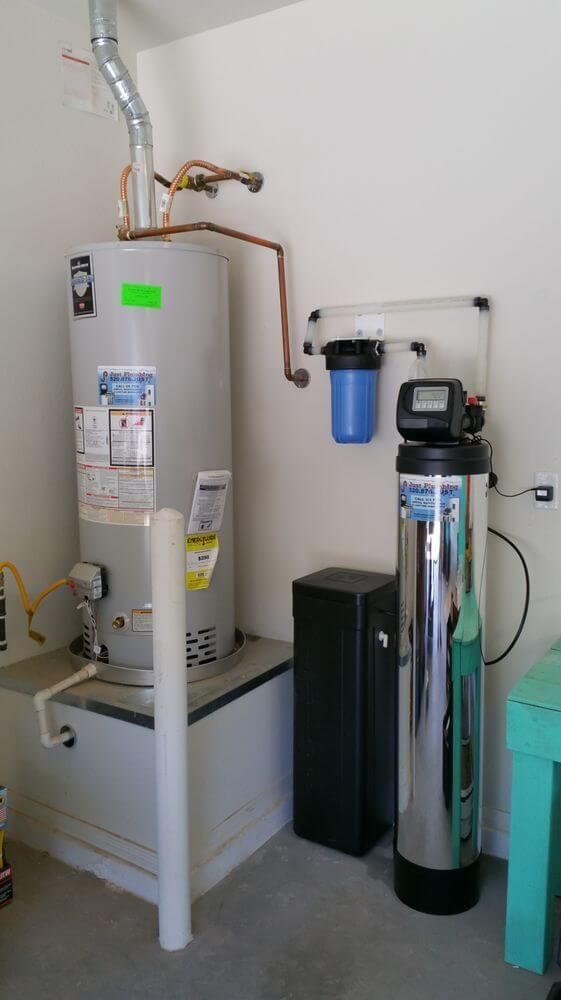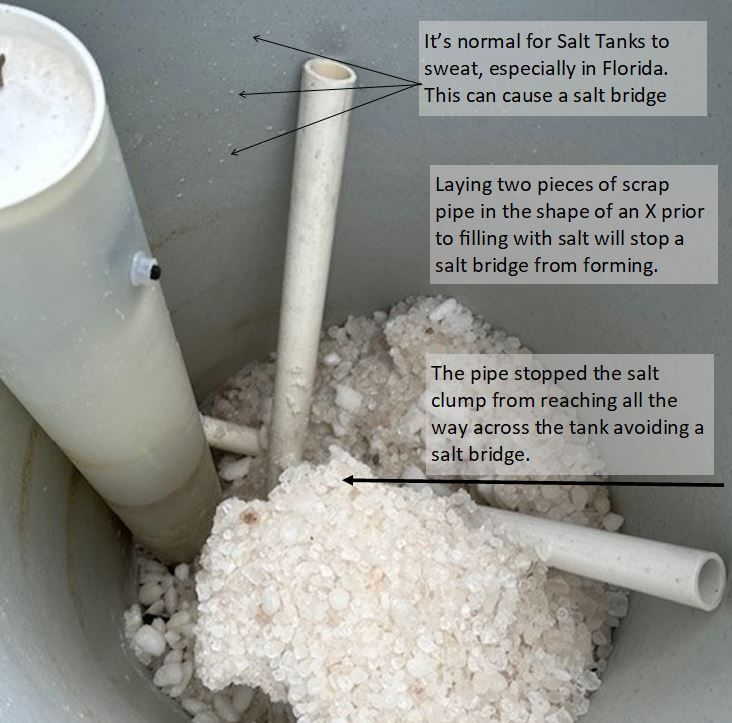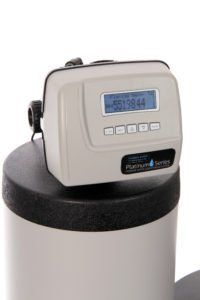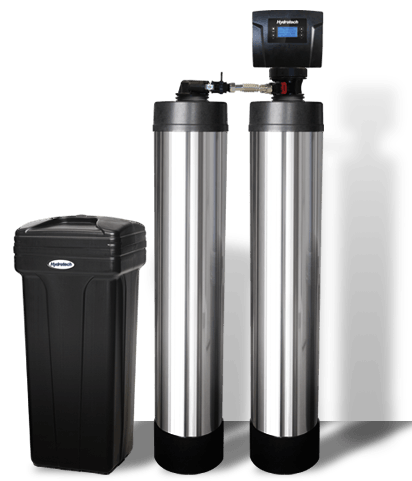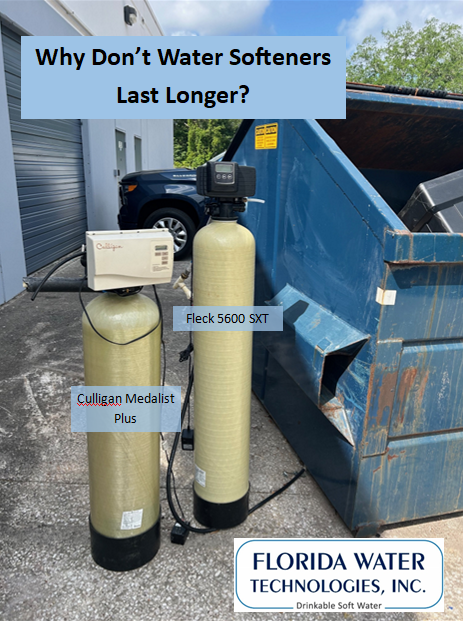You may have noticed that the use of tankless water heaters has grown over the past years. Neighborhoods like Nocatee exclusively use these updated styled water heaters. However, hard water levels in Jacksonville FL municipal water are very high. Which can cause the risk of scaling inside these water heaters that causes damage. Therefore tank less water heaters would benefit from the use of a water softener system.
Accumulated Scale Inside Tankless Water Heaters
Hard water produces white scale deposits that form crusty white deposits in your home. Inside tank less water heaters this scaling builds up over time eventually shutting down the water heater.
Tank less water heaters have sensors that monitor the heat-exchange operation. It turns out that, scaling inside the heat exchanger will eventually lead to a fault code for over-temperature conditions.
1. Have the piping set up to facilitate chemical cleaning.
Request that the tankless water heater be installed in a way that allows for chemical cleaning. Chemicals can be used to flush out hard water scale deposits inside the water heaters heat exchanger. However, you will need to do this routinely to keep the water heater from failing.
2. Install pressure gauges before and after the tank less water heater.
Installing pressure gauges before and after the water heater will help monitor scale build up. You see, a pressure loss on the gauge after the water heater would demonstrate restriction. If your pressure is lower on the outlet side then your water heater is becoming overcome by scale deposits.
3. Install a water softener system ahead of the water heater.
Installing a water softener system in Jacksonville FL is the best option to protect your tankless water heater. Water softener systems remove the minerals that produce the white scale build up. In other words without these hardness minerals your tankless water heater and other appliances will be protected.
The post Do High Hard Water Levels affect Tankless Water Heaters? appeared first on Florida Water Technologies.
